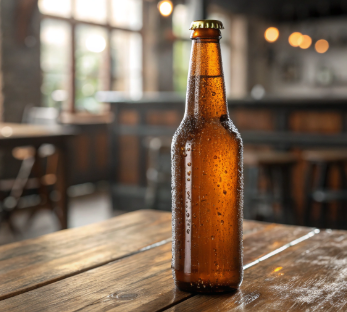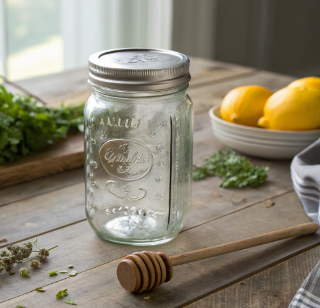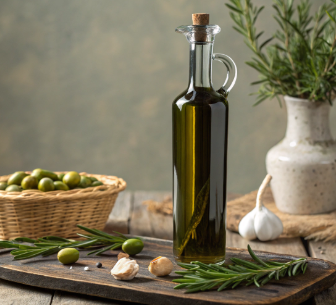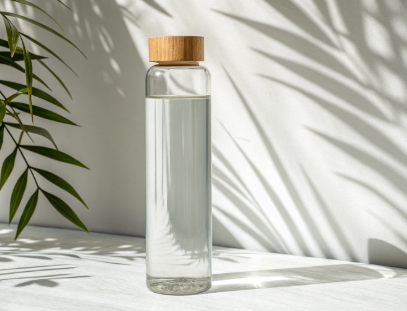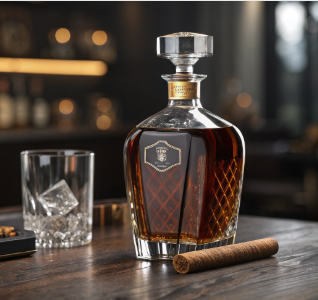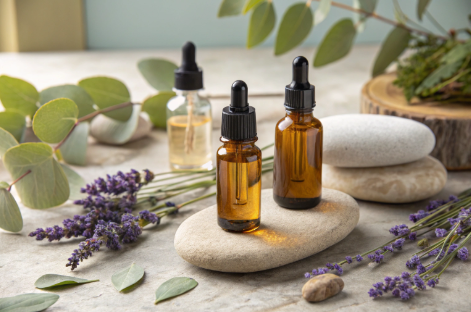Because beer tastes better in a glass, glass allows the aroma and bubbles to come to the surface, which makes every sip smoother and more full. When you pour beer in a glass it builds up a nice foam head that helps trap the flavors. Light and shape and even the way you hold the glass alter the way beer feels and tastes. All of these little things combine for superior imbibing experience, which is the reason many people prefer glass to bottles or cans.
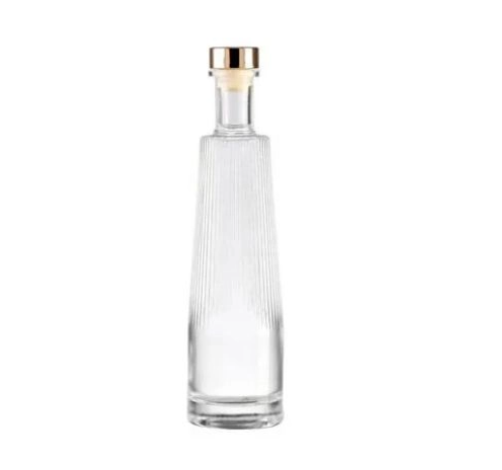

The Science of Aroma
Aroma influences beer’s flavor — approximately 80% of what we term ‘flavor’ comes through the nose, not just the mouth. When beer is contained in a can or bottle, the little hole keeps most of those aromas confined. You get less of the malt, hops and yeast note because they can’t evaporate. On tap, in a glass, beer kicks you in the head with a bigger richer sensory hit because aroma disperses and hits you quickly.
Glassware is a huge factor. Glassware changes how beer flows, how it strikes your tongue, how much aroma you experience. A thin bottle neck or can opening contains those smells, but a glass releases them. That’s why the glass can alter the entire flavor.
-
Snifter glasses, which have a wide bowl and tight top, work best for strong, full-flavored beers. They capture and concentrate the scents, giving the smell a more powerful punch. Love, love, love this for beers that have a ton of ABV or bold flavors like chocolate, coffee, or fruit.
-
Tulip glasses, which flare slightly at the top, push out aromas such as banana or clove that are found in wheat beers and some Belgian ales.
-
Pilsner and chalice glasses flaunt the hue and fizz. They don’t just make the beer look fancy, they preserve the foam, which captures and carries aroma straight to your nose.
-
Pint glasses that form a dense head, such as IPAs or Belgians, increase aroma as well. More froth equals more fragrance emitted.
-
Each glass’s design alters the amount of the beer’s aroma that makes its way to your nose. Certain glasses emphasize hops, others spotlight malt or yeast.
Right glass, right beer, it makes a real difference. The smell pops and the flavor just seems more full.
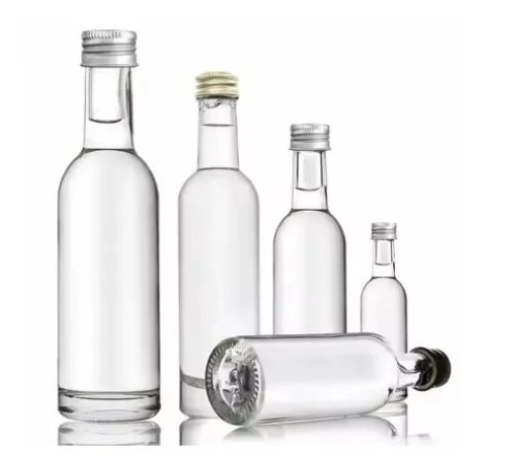

A Feast for the Eyes
A feast for the eyes isn’t just about a visually appealing plate, it’s about how visual experience influences taste. When beer is served in a transparent glass, its hue and apparent density reveal hints of its contents. A deep amber suggests malty sweetness, and a pale gold could communicate something crisp and clean. The appearance of the foam, its head and recede, speaks freshness and brewing style. These visual cues can alter the way your brain prepares for that initial sip.
Everyone drinks with their eyes first. If a beer appears bright or full-bodied, it can amplify or balance the flavors. Research demonstrates that color and transparency form expectations. Even the way the bubbles ascend can contribute to an impression of quality. For us, the right glass takes an ordinary libation and transforms it into a mini occasion, enhancing the entire experience. In restaurants or at special occasions, the appearance of food and beverages is almost as vital as flavor. Some claim it contributes to the memory of the meal, while others believe flavor should be paramount.
For certain cultures, such as Japanese or French, the appearance of what’s presented is extremely important. Chefs are obsessed with color and garnish and how everything rests on the plate—or in this instance, the glass. Food and drink photos leverage this same concept, grabbing attention and stimulating hunger. Still, they say, some girls like it rough, because they’re not interested in flash — they’re interested in substance.
Many beer styles work best with certain glass shapes:
-
Pilsner: tall, slim glass for clarity and bubbles
-
Stout: wide-mouthed glass for aroma and thick foam
-
Wheat beer: curved glass for big head and bright color
-
IPA: tulip glass for strong scent and color
-
Lager: classic mug for easy grip and cool look
The Feeling of Quality
There’s something about the sensation of beer in a glass. There’s something to the feeling of quality, the actual tactile delight of holding a cold, smooth piece of glass rather than a can or bottle. That weight and shape impart that feeling of quality, that feeling of craft, that feeling of care. Like it was more considered. A glass feels weightier in your hand and is molded into just the right shape. This alters the way you observe the beer’s color and bubbles, something you scarcely catch in a can. You can watch the foam settle or feel how light shines through. These little things accumulate and make it feel that much more special.
Great glassware can give beer a sense of quality. They say beer tastes better when it comes from a nice glass, and there’s a little bit of truth in that. Research demonstrates that anything delivered in glass, particularly when it looks pristine and craftily concocted, feels like better quality stuff. Sipping off glass is associated with opulence and coziness, regardless of the fact that the beer is the same. The transparent substance doesn’t alter the taste, but it alters the manner in which you taste and smell it. You receive the aroma of the hops and malt so much with every sip, that you lose with a can or bottle.
All materials are not created equal. With plastic, it can feel too feathery and cheap and metal can have a harsh taste, but glass feels rock solid and smooth. The right glass can highlight the beer’s most attractive aspect—its color, foam and even the fridge-chill. Serving beer at the right temperature in a clean glass can enhance its taste. Others associate this to a feeling of scarcity or even exclusivity, like holding a limited-edition ale in a collector’s stein. Ultimately, the sensation of quality is a private thing, but glassware is usually a large component.
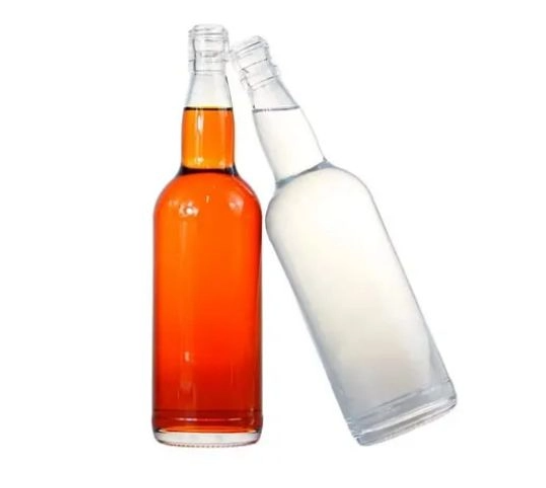

Glass Bottle vs. The Can
Beer does kind of taste a little different from glass bottles than it does from cans. Glass bottles hold the flavor of beer closer to the brewer’s intent. They don’t flavor it on top, your taste is the beer. Cans, however, can impart a faint metallic flavor. Others less so, but it’s there. This naturally makes beer from a glass bottle seem smoother and more authentic.
When you pour beer from a bottle into a glass, you can leave behind yeast at the bottom. Which provides a crisper pour and a fresher flavor. While cans are just that, mixing everything together so you get it all at once, which can sometimes dull the flavor. Amber glass bottles give you 99.9% of the way there in keeping UV rays out. This prevents sunlight from altering the beer’s flavor, which is critical to maintain freshness over time, particularly in stronger beers exceeding 8% alcohol. Cans keep out light, but the danger of a metallic taste persists.
Glass bottles keep the taste right longer, and they’re a mark of craft or premium beers. They think of cans as more for the masses or the big brands, not the special brews. Glass is entirely recyclable and endlessly reusable without degradation, which is increasingly important as consumers seek out ways to minimize waste.
Cans are lighter, portable and better for outdoor excursions. Some prefer the hand-feel of cans but others love the appearance and sound of a pour from a glass bottle. Ultimately, it’s up to personal preference.
-
Glass Bottle Pros:Keeps taste pure, blocks UV, looks premium, holds taste longer, 100% recyclable
-
Glass Bottle Cons:Heavier, breaks easy, not as portable
-
Can Pros:Light, easy to carry, keeps out light, does not break
-
Can Cons:Can taste metallic, seen as less premium, less lasting flavor
The Psychology of Perception
The way we perceive and experience beer alters the way we flavor it. The appearance of a glass, its form and hand feel primed the experience. Research reveals that serving beer in different ways alters our anticipation and our pleasure. For instance, round or curved glasses are associated with sweetness. They have people rate drinks in these glasses as smoother. Form influences smell and flavor as well. Wine connoisseurs have been biased when sampling from separate glasses. That same beer in a straight glass may taste less sweet, more bitter or even smell different.
|
Study/Source |
Key Finding |
|---|---|
|
Crossmodal research |
Curved glass = more beer consumed, faster drinking |
|
Shape-taste association |
Round glass = sweeter taste perception |
|
Wine expert studies |
Ratings shift by glass shape |
|
Congruency studies |
Matching glass to drink = higher enjoyment |
|
Drinking pace research |
Straight glass = slower drinking |
Familiarity dictates what they select. A lot of them choose what they have heard. A classic beer glass or a familiar logo feels comforting. This ties to nostalgia and old enjoyment. When beer is served in a familiar glass, they say it tastes better. Packaging establishes credibility. The right glass tells you the beer is premium, fresh or good value.
Blind taste tests demonstrate even more. They say that people cannot distinguish the same beer in a glass from that in a can or bottle. When they see the glass, they score the taste higher. Simple — it demonstrates how much appearance and former emotion lead the sense. Our brains intermingle what we see and recall with what we sip.
Personal experience matters as well. A favorite cup from home or a recollection of a great evening alters the flavor. All of these – shape, feel, look and memory – converge, informing each sip.
The Unseen Influences
There are small things that can affect how beer tastes, even if we don’t immediately notice them. Carbonation is a game-changer. Beer in a glass prevents bubbles from accumulating either too quickly or too slowly. This is what makes the beer ‘sit right’ in the mouth, not too flat or not too fizzy. The manner in which you pour your beer is important as well. When you tap beer into a glass, you release some bubbles. This prevents additional air from traveling to your stomach, so you feel less full or bloated. The perfect pour aids in foam formation on top, which traps aroma and enhances every sip.
Glass does a good job of maintaining beer’s authenticity in flavor. It doesn’t contribute any aroma or flavor of its own. Cans and a few plastic cups can leave beer with a faint metallic or strange odor. It can distract from what the brewer intended you to experience. Glass prevents outdoors odors from sneaking in, so all you receive is what belongs. How much of the beer’s aroma you receive is determined by the glass. The curve and open mouth waft extra scent to your sniffer. This is crucial because up to 75% of what you taste is actually smell. A wide glass allows more of the beer’s aroma to waft up. This allows you to better detect all the subtle notes in every sip.
Other stuff can ruin beer’s flavor. Sunlight can alter beer, giving it a “skunky” flavor. A glass allows you to see the beer but it should not be exposed to bright light because of this. The proper glass also places the beer at the proper warmth. Various brews are best enjoyed at various degrees, so the shape of the glass can maintain the perfect chill or warmth.
Conclusion
Beer in a glass just sits better. Smell comes first, crisp and clear, not trapped beneath a can tab or lid. Color pops—gold, amber, deep brown—makes you crave that first sip. The lip of the glass is cool and smooth, not like tin or plastic. Foam sits up top, not smashed flat. Every sip seems more crisp, not flat or muted. You watch the bubbles ascend. You experience a greater flavor. You experience what the brewer intended for you to experience. For a true beer break – reach for the glass! Try your next lager, stout or pale ale that way. Pay attention to what you’re tasting. Curious for details? Request advice or post your own glass selections.
Frequently Asked Questions
Why does beer taste better in a glass than from a can or bottle?
Beer tastes better in a glass because the act of pouring frees more aroma, the flavor is enhanced, and you get to watch the color and bubbles, all of which improve the drinking experience.
Does the shape of the glass affect the taste of beer?
For example, the shape of the glass can concentrate aromas and direct how flavors hit your mouth, causing the beer to taste different as opposed to other vessels.
Can pouring beer into a glass reduce bitterness?
Beer tastes better in a glass because it releases carbon dioxide, which can bitterize beer.
Is there a difference between drinking beer from a glass and a can?
A glass pours beer into contact with the air, releasing its smell and flavor, which cans and bottles tend to contain.
Why is aroma important when drinking beer?
Aroma is huge when it comes to taste. By smelling the beer as you drink, you pick up on all sorts of additional flavors, that make the beer taste more full and complex.
Does seeing the beer in a glass really matter?
Indeed, viewing a beer’s color and bubbles can enhance its pleasure too. Visual signals create anticipation and stimulate the beer to be more delicious.
How does glassware influence the perception of beer quality?
Sipping from a clean, smartly designed glass feels more special and can make the beer taste higher quality than if you’re drinking it out of a can or bottle.




